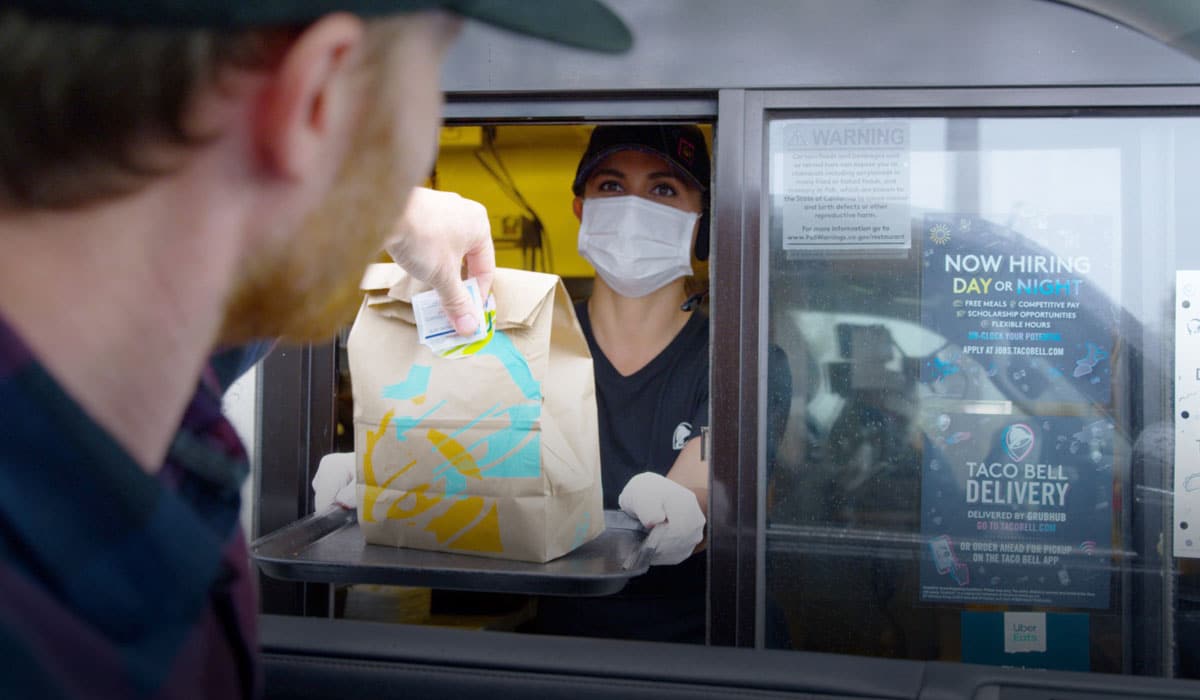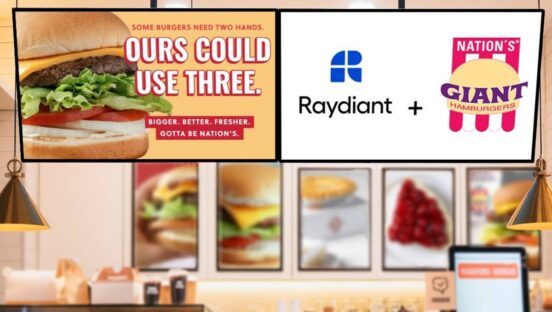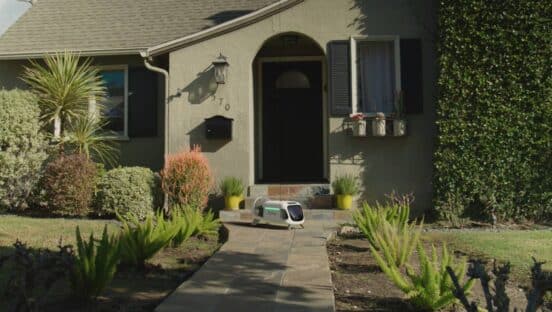Imagine driving up to your favorite restaurant. You’re heading straight for the drive-thru lane because you’re in a rush and need to pick up a quick lunch before your next meeting. When you approach the order window, a screen already has your name at the top and your usual order pulled up, with the option to adjust it or try something new. At the same time, your phone dings with a notification from the restaurant’s app with an exclusive offer through your loyalty membership for a discount. All you need to do is hit “Pay Now” on your phone and you’re done.
Today, this level of efficiency and personalization isn’t a dream—it’s here. Over the course of the pandemic, the quick-service industry underwent massive transformation, placing a newfound importance on mobile app offerings like QR codes, order-ahead, curbside pick-up and contactless delivery. A recent State of Mobile report found that mobile orders in the U.S. grew by 105 percent in the past year. Now that consumers have experienced increased convenience, new habits have formed and created a higher standard for quick-service restaurant service. These offerings aren’t just a fad; they’re here to stay.
To meet these new expectations, brands are turning to location services to offer the level of service consumers would receive from their favorite restaurant’s best server, through the ease and speed of a mobile app. As the industry looks towards a post-pandemic future—one that relies on mobile more than ever before—I believe a new paradigm is taking shape; one that offers customers full optionality that bridges the physical and digital divide.
Today, quick-service restaurant brands need to think about how they can optimize their physical footprint with technology to meet customers wherever they are, whether that’s at the ordering counter in-store, at the drive-thru window or through third-party delivery services. Here are three strategies quick-serve companies should implement now to excel in this new era of customer experience:
Differentiate with a fast and seamless app experience.
During the pandemic, consumers learned to lean on mobile apps as not just a “nice-to-have,” but a must for getting food safely and efficiently. Now, these apps are a utility for brands; the days of waiting around for twenty minutes while a restaurant prepares your order are long gone.
A recent report found that nearly 60 percent of digital food orders were placed via mobile app over the last year and, more importantly, consumers reported ordering 30–40 percent more frequently each month from mobile apps than online ordering pages. Well-designed websites aren’t enough anymore; investing in a native mobile app is crucial to business success.
Fortunately, the adoption of location services have enabled developers to center their apps around the customer, offering more speed and accuracy than traditional order fulfillment. Quick-service restaurants, like Starbucks and Chick-fil-A, all doubled down on their mobile apps investments during the pandemic, offering new pick-up options and contactless payments, which increased revenue and retention in tandem.
Yet there’s still more to be done. Estimated timelines for ready orders and manual check-ins for customers should no longer be a concern. With the right technology, today’s mobile apps can detect live ETAs as soon as a customer is in proximity, so that employees can either place the ready food at pick-up or bring it out to the curb. Brands that double down on customer experience through their apps now will be poised for major growth in 2021 and beyond.
Know the right time—and means—to engage.
In today’s highly competitive quick-service space, grabbing customer attention and building a sustainable relationship is no easy feat. Consumers are inundated everyday with ads and notifications about new products, special offers and company messaging. To stand out in a crowded marketplace and keep customers coming back for more, brands should be mindful of how and when they engage with consumers.
Consider the decision of where to eat while you’re on the road. In the world of quick service restaurants, this decision is often made spontaneously. Brands can capitalize on this by leveraging location-triggered notifications to push customers in their direction and tap in at a time when they need inspiration. McDonald’s, for example, sends special promotions through their app based on local events in the customer’s city, like sporting events. This strategy not only encourages customers to go to a store nearby, but also offers personalized service that taps into interests—ultimately fostering trust and loyalty.
But getting customers to open the app is only the first step. Businesses need to give their customers a reason to continue using it even when they are on-premises. In-app loyalty programs are the prime example of this. In fact, a recent study found that more than 57 percent of users would spend more with a loyalty program. The MyPanera app, for example, allows customers to pay in-store with the app to garner points on their account and unlock free drinks and food. For Panera, it has paid dividends—their program grew to nearly 40 million users during the pandemic.
As the physical and digital worlds overlap, companies must lean on contextual experiences and engagement to provide optimal customer experiences. This will be the difference in a brand that excels, and one that falls behind, in the post-pandemic world.
Invest in optionality for customers every step of the way.
The pandemic opened the door for new channels of customer engagement. Curbside emerged out of necessity, but also out of newfound customer preferences, and quickly became table stakes for QSR brands—often serving as the primary avenue for ordering. However, as mask mandates lifted and people started going back to restaurants in-person, the desire for these new channels did not dissipate. What this indicates is a desire for options; consumers want to choose how they get their service, regardless of whether it started as a COVID-era practice or not.
Take drive thru, as an example. This medium has remained a preference for online and on-premise ordering even with in-store ordering back in motion. Yet a recent report found that customers are waiting longer and getting more inaccurate orders at drive-thrus in 2021, compared to 2020. Businesses are pulling back on some of these hybrid avenues that emerged during the pandemic, but customers aren’t using them any less. Companies should actually be prioritizing the various channels for customer engagement. Taco Bell, for example, announced that they would be expanding their Go Mobile initiative with a new restaurant design across the country with dual drive thrus and smaller dining areas, recalibrating their physical footprint with digital offerings to maintain these new channels.
To succeed, companies need to invest in optionality, rather than returning to pre-pandemic habits which underutilized mediums like drive-thru. Customer needs and preferences may vary, but one thing has become crystal clear: consumers want the ability to choose their own journey, and businesses should empower them to do just that.
Like many industries, quick-service restaurants were forced to adapt at record speed to a new era of consumer needs and demands. Companies that handled the shift well were those that had the technology in place to power location-based mobile services in the new normal, and those that didn’t were forced to catch up quickly or risk falling behind. Now, companies are in a position to capitalize on this rapid digital transformation to fuel continued innovation and growth by doubling down on their mobile applications to bridge the physical and digital divide.
Coby Berman is the co-founder and COO of Geofencing company Radar.












